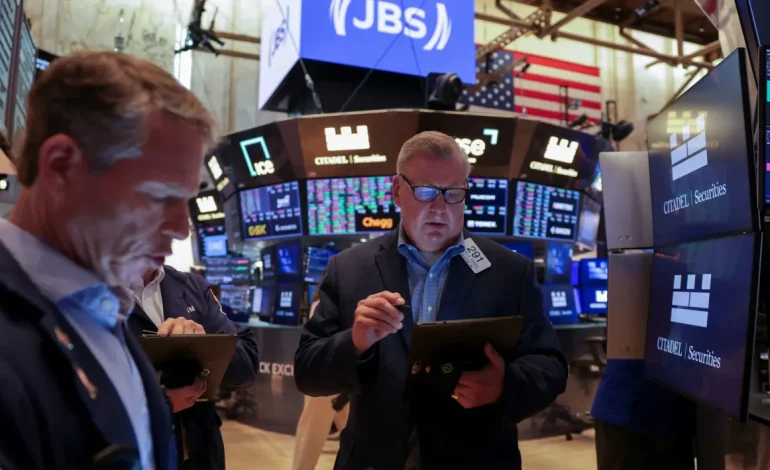US stocks rose on Thursday, with the S&P 500 approaching its highest level on record, driven by easing geopolitical tensions and improving investor sentiment.
The benchmark index gained 0.6%, placing it within 0.2% of its intraday peak of 6,147.43, set in February. Meanwhile, the Nasdaq Composite rose 0.5% and the Dow Jones Industrial Average added 315 points, or 0.7%.
The upward momentum reflects a broader recovery in US equities. Since falling to a low in April during heightened concerns over US trade policy and global tariffs, the S&P 500 has rebounded more than 20%, recovering nearly $9.8 trillion in market value, according to FactSet.
Jamie Cox, managing partner at Harris Financial Group, noted that investor optimism is being supported by “expectations for lower interest rates, less regulation in the banking sector, and a more favorable environment for stimulus in Europe.” He added that current conditions contrast sharply with earlier fears of economic stagnation.
Economic indicators also contributed to the market’s gains. Initial jobless claims for the week ending June 21 came in at 236,000—below the 244,000 consensus—signaling continued resilience in the labor market.
Internationally, signs of stabilization in the Middle East provided further support for stocks. President Donald Trump announced that a ceasefire between Israel and Iran was holding, despite expressing dissatisfaction with both countries’ adherence to the agreement. A US-Iran diplomatic meeting is expected next week.
Small-cap stocks also showed strength, with the Russell 2000 index rising 0.83% to 2,153.91. Analysts at Wolfe Research highlighted 2,170 as a key breakout level, suggesting a move past that point could confirm broader market strength heading into summer.
Defense-related equities outperformed, with the iShares US Aerospace & Defense ETF reaching a new high. Smaller companies such as Rocket Lab, AeroVironment, and Karman Holdings led the rally, significantly outpacing larger players like Boeing and Lockheed Martin.
Despite the rally, some market watchers remain cautious. Wall Street analysts are divided over whether the S&P 500 can sustain its momentum or if it may face renewed headwinds. Upcoming developments in trade policy and inflation expectations could influence direction.
In currency markets, the US dollar index fell to its lowest level since February 2022, following reports that President Trump may announce a successor to Federal Reserve Chair Jerome Powell later this year. The potential change has raised concerns about central bank independence, a factor analysts say is contributing to the dollar’s nearly 10% decline in 2025.










The latest news in your social feeds
Subscribe to our social media platforms to stay tuned